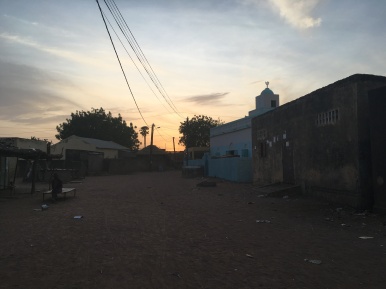
Hello everyone and greetings from Bakel! I have just arrived back here after three productive weeks in Gabou, my second research site. Unbelievably, my fieldwork in the region of Tambacounda is just about over. I am hoping to take care of a few final interviews over the next couple of days and then head up to the region of Matam for stage two sometime early next week. Between Bakel, Yaféra, and Gabou, I have now completed almost 60 interviews and am feeling quite proud of my progress. Even more unbelievably, my Fulbright grant is officially over halfway done! I have now been in Senegal for almost exactly five months, which is slightly longer than I spent in Europe during my third year.
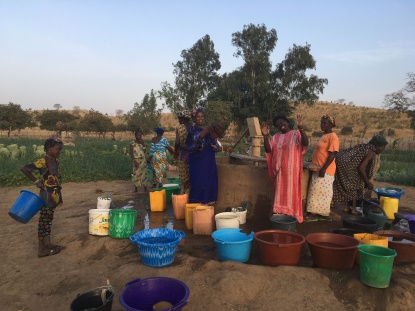
After leaving Yaféra at the end of February, I spent a few days in Bakel before traveling to my second village. It was awesome to hang out with a new Peace Corps friend and take advantage of the big city comforts like prevalent produce, an ATM, a non-bucket shower, and a couple of cold beers. My second site, Gabou, is located on the paved highway approximately 25km south of Bakel, which makes for vastly easier transit than dirt backroads. Unlike Yaféra’s fairly homogenous socio-linguistic makeup, Gabou is home to a diverse population of 6000 residents who are predominantly Peuls alongside smaller neighborhoods of Soninkés and Bambaras. Peuls, also known as Haalpulaars or Toucouleurs, are Senegal’s second largest ethnic group, but it was my first time living in a majority Pulaar-speaking community. As a result, this change necessitated my starting over completely from the rudimentary Wolof and Soninké I’ve picked up so far. Thankfully, my final research sites are also Pulaar villages, so this knowledge will come in handy over the next two months.
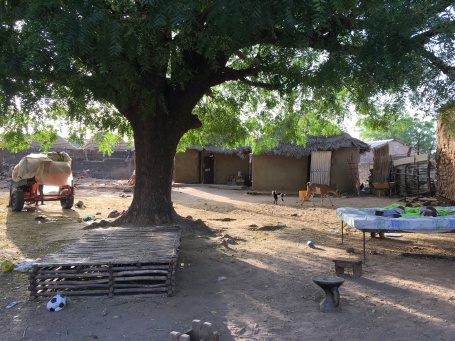
In Gabou, similarly to Yaféra, the village’s leadership is divided between traditional authorities based on birthright and elected authorities. I stayed with the family of the village chief, who is well-connected in the community and also very dynamic, which definitely facilitated my ability to complete interviews. The family is much smaller than my hosts in Yaféra, with a mere 20-25 people in the house and one migrant abroad, making for a much more even gender balance. Their house is composed of three one-story concrete buildings (where most of the family lives) and several huts (which are used for storage and housing guests). These buildings form a circle around a communal courtyard dominated by a giant tree and lots of livestock, including sheep, goats, chickens, and one cat. This family hosted a Peace Corps volunteer through the end of 2015 and I stayed in the hut where she lived. The hut is made of mud with a straw roof, which actually provides more tolerable temperatures than concrete houses. I also experienced the wonders of both the outdoor latrine and the fact that the house is right across the street from the village’s central mosque, whose call to prayer was extremely loud and very frequent.

The afore-mentioned volunteer was a white woman around my age with a similar build and hair color to mine. These similarities caused mass confusion during my stay in Gabou, particularly when I first arrived in the village, because everyone automatically assumed I was her. To add to the misunderstanding, because Peace Corps provides language training and volunteers live in their villages for two years, their language skills generally become pretty good by the end of their service. Therefore, people continuously approached me during my first week there and excited attempted to converse with me in Pulaar, thinking I was Rougui, their long-lost volunteer. Sadly, my five to ten words of Pulaar were not sufficient to explain that I was neither Rougui nor her replacement volunteer. Once someone intervened in Pulaar to properly explain the situation, people were often disappointed to learn that I could only really speak French and was only going to stay for a few weeks. Nonetheless, my Pulaar improved infintessimally over time and by the end of my stay, almost everyone in town was successfully greeting me as Kadia instead of Rougui (since Touré is a very Soninké-specific name, as soon as I walked in the door on the first day, I was immediately renamed after one of the women in the house).
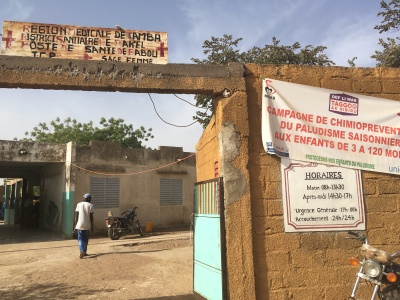
My interviews went quite well and it was very interesting to compare Gabou and Yaféra. Their differences in size, proximity to the paved road, ethnic diversity, and general atmosphere in each village generated some disparities in responses to my questionnaires. However, many of the central themes were recurrent between the two sites, including high youth unemployment, a strong divide between policy-makers in Dakar and the realities of village life, and an perceived increase in difficulties surrounding the migration process.
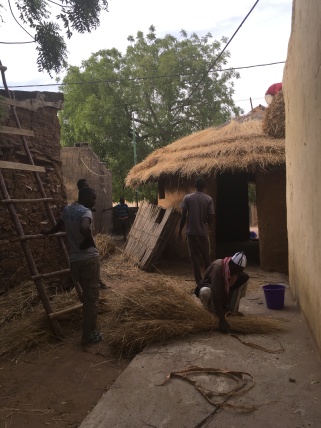
One particular topic of conversation emerged that really forced me reflect on my own privilege as a Westerner. For a variety of reasons, Gabou has many connections with international partners, projects, and NGOs, so people there have more experience with toubabs and their comings and goings than somewhere like Yaféra. Several of my interview questions focus on whether or not people come back after they emigrate and the resounding answer is almost always “yes, but only after retirement.” After one of my interviews, I was chatting with the participant about the difficulties that many migrants face today and he remarked that toubabs in Senegal come and go freely with virtually no legal barriers. He said something to the degree of “You toubabs come here and most of the time, it’s to achieve a specific professional goal and then eventually you return home. For us, it’s the same way, we want to go to Europe to achieve the goal of supporting our families back home and then eventually we leave. Even when we’re physically and financially stable there, it can be very emotionally difficult, because our thoughts are often with our families and friends back home and we know that we will eventually leave Europe to return home. I’m sure you understand, as someone currently doing the exact same thing. All most people here want is the legal freedom to continue this cycle.
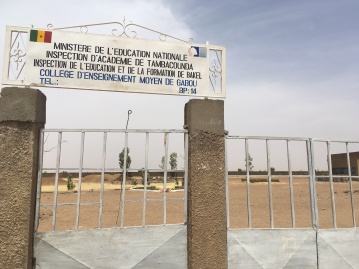
After all, Americans and Europeans do so in our country all the time with no legal limits.” Although I have long been aware of the neocolonial power dynamics surrounding the differentiation between terms such as “ex-pat” and “immigrant,” I hadn’t truly reflected upon the parallels between my experience in Senegal and the emotional realities of Senegalese migrants in Europe or the US. With very little effort, I have been able to live and work in another country for a set period of time, while a Senegalese student researcher in my shoes would have to jump through extensive bureaucratic hoops. I too am a temporary immigrant working on another continent for a limited period of time before I will return to my home community and culture.
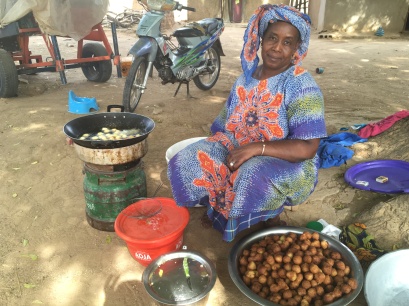
When not working on my project, I spent a large portion of my time trying to escape the heat. I attended the market, which people from all over the area flock to every Monday. Each week, I reveled in the available fruit (shouts out to the return of mango season) and stared in awe at my business-mogul namesake, who sells fried donuts and iced juices to vendors with a tycoon-like efficiency. I had the opportunity to visit the neighboring village of Kadiel to attend a ceremony celebrating the death of an important marabout, which gave me a chance to get out of Gabou for a couple of hours. While everyone else listened to speeches and then participated in a huge communal prayer, I mostly just observed the religious celebrations, people-watched, and checked out everyone’s elaborate formal-wear.
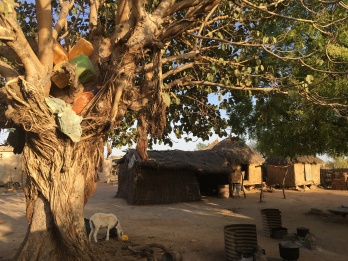
I also got the chance to hang out with another new Peace Corps friend and visit Sarré, his tiny 300 person village. This trip gave me further appreciation for the affluence that migration has brought to my two primary research sites. On the more mundane days, I played lots of cards with the kids of the household, watched frequent soccer games on TV, stocked up on local peanut butter and cherry tomatoes, and spent some good old American alone time by journaling, watching movies, and generally praising the modern technological miracle of the Kindle.

I can hardly believe that my stay in Tamba is almost up and I’m feeling really good about how my project is progressing. I’m curious to see how Matam compares, both as far as my research questions go, but also just in terms of everyday life. Rumor has it that the stretch of highway between Bakel and Ourossogui (the regional hub I’ll hit before journeying on to my next site) is home to the worst roads in Senegal, so I’m definitely looking forward to getting that trip out of the way. I hope everyone at home is starting to warm up and not going too crazy about all of the terrible political happenings currently plaguing the United States. Sending lots of love and weather-related jealousy your way!

time flies!
LikeLiked by 1 person
Colleen, I am in awe of your accomplishments. What you are doing is so beyond my experiences in life. I couldn’t imagine doing what you are doing so well! I am incredibly proud of you. Stay safe and let the Sengalese know that most Americans are not like the bad eggs they hear about and wish them only the best.
Love, Uncle Paul
LikeLike
Hi Uncle Paul, thanks so much for your kind words and I really appreciate you following along with my adventures! I hope you and the rest of the family are doing well! Xoxo,
Colleen
LikeLike
Simply amazing! So very proud of you!
Xo Aunt Kathy
LikeLike
Thanks Aunt Kathy, I appreciate it!! Love,
Colleen
LikeLike
you go girl
LikeLiked by 1 person